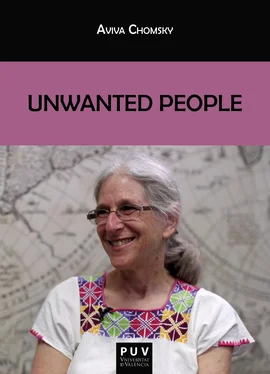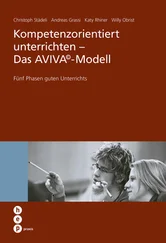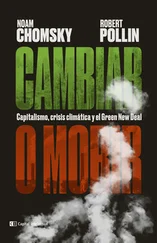In Salem, the first Dominican workers were recruited to work in the declining small leather shops in the 1980s. Their numbers increased and they moved into the service sectors. By 2010, over 30% of the children in Salem’s schools came from Spanish-speaking homes. In this process Salem resembled a multitude of other New England textile towns, like Lawrence and Lowell in Massachusetts, and Central Falls, Rhode Island.
Salem’s history has been deeply intertwined with global trends and events in multiple ways over hundreds of years. Making visible these invisible global links offers a challenge and an opportunity to local historians, and offers valuable material for the classroom.
Salem is not unique in its global connections. Every area of the United States has been affected by colonialism, industrialization, deindustrialization, migrations, and globalization. Students can search for these global connections in their own communities’ past and present.
They could begin by looking at the global origins of the products they use. Most supermarkets state the origin of their produce, and students can see a global system there in the aisles. Clothing and shoes by law must state where they were manufactured. What the labels don’t tell us is who worked in those factories and on those farms, and under what conditions. They don’t tell us why manufacturers have moved, or outsourced their work, to those countries, or why peasants and farmworkers around the world remain poor, while the food they produce graces our supermarket shelves in the United States. But a bit of research, and investigation into history and political economy, can start to answer those questions. Students can first become more aware of their contemporary realities, and then try to understand how they came to be.
Migrations, past and present, also create very visible markers in local communities. Students can be encouraged not only to find those markers, but also to ask those historical “why” questions that lead to global connections.
The production and movement of energy sources—coal, gas, and oil—may be more invisible than those of food, clothing, and people, yet they affect the lives of every person in the United States. Learning about one case, like the Colombian coal in Salem, can lead to questions about other energy-producing regions, the social impact of extraction, and the interests, policies, and relationships that have structured our energy-hungry world.
When students begin to learn about inequality and social injustice, they often also begin to ask what they can do to create a more just society and world. These were, in fact, the questions that motivated me to study history. For if we do not understand the events, systems, and forces that brought us to where we are today, how can we begin to imagine how we can make change?
(2013)
Primary source 1
Salem, December 21, 1926
To the Directors of the Naumkeag Steam Cotton Company.
Gentlemen:
The Committee to investigate the question of a possible Southern location, begs leave to submit the following report:
We sent Mr. Seamans and our engineer, Mr. Arey, to make a survey of possible sites in Alabama. The impression that we had that Alabama was particularly attractive as a location was strengthened by the data collected as well as by the fact that many of our competitors are already there or have sites selected for future development.
Briefly stated, our representatives covered a route of 750 miles from central to northern parts of the State under the guidance of Col. Mitchell, Vice-President of the Alabama Power Company. They visited mills or saw sites belonging to such northern concerns as the Merrimack, Indian Head (Nashua), Dwight, Otis, Pepperell, Everett, and Utica.
The region covered is favorable as to climate, has good roads, abundant labor supply of native American stock, and the communities are eager for new industries and ready to help in every way, even giving us what land we would require. The mills run night and day, 55 hours day shift and 50 hours at night.
Roughly speaking, taxes would be less than 50% of what they are here; power 40%; labor 25 to 50% lower than in the North; the greatest saving being on weaving as the weavers run more looms each than here. Goods can be shipped north for finishing, freight rate on finished goods being only 84¢ against $1.15 on raw cotton. Anniston, Alabama, is the site selected by our representatives as combining all of the advantages named above and including also the best climate and railroad facilities in the State.
With many of our competitors located there or planning to do so, it is none too early in the opinion of your Committee to give the matter of building a small experimental unit there most earnest consideration.
This could be done by increasing our stock and operating under our own name or by organizing a separate corporation, all the stock of which could be held by this company. The cost of a complete 25,000 spindle unit with looms but without a finishing plant is estimated to be $1,250,000, and cost of housing for, say, half our help would cost about $200,000 more. This plant could turn out about 50,000 lbs. of “Salems” or similar goods.
This is a condensed report from Mr. Seamans’ notes. His complete report will be placed in your hands for perusal at your leisure.
Respectfully submitted,
Committee on Southern Location
Primary source 2
Petition from the Community of Tamaquito
Republic of Colombia
Department of La Guajira
Municipio of Barrancas
Indigenous Community of Tamaquito II
August 2006
International Group Witness for Peace
Warm greetings,
Knowing your great spirit of cooperation with the communities, we hope to present you information about our needs and the damages caused by the Cerrejón mine and its administration.
The Tamaquito II community is suffering greatly from the contamination, and our people are becoming sick from the coal dust from Cerrejón’s excavations. They say that we are not within the mine’s area of exploitation, but according to the law no community should have to be located less than 10 km from a mining operation. The other thing is that they do not take our community into account in any way. We hope that you can help us so that the mining company will relocate us away from here so that we can live comfortably.
We have pursued some projects for relocation with the municipal government, but they are just playing around with us (“nos están mamando gallo”) and they have taken away our medical services and medicines, which we have not received for the past five (5) months.
We thank you in advance for your attention to our petition and we are sure that you will help us.
Sincerely,
Jairo Dionicio Fuentes E.
Gobernador de Cabildo (Indigenous community government leader)
Nilson Antonio Ramírez
Secretario Comité de Cabildo G.
Short Term Needs
Transportation
Issues: When a person from the community becomes ill, we have to carry him or her out in a hammock because we have no vehicle with which to take them into town. We hope that you can help us with our transportation problem, so that we have a vehicle of our own, as we are incommunicado without one.
Medical Supplies
Issues: If we had access to medical supplies we would be able to treat people who become sick while we are waiting to be able to take them to the town.
Food coupons
Issues: The community, has you saw, has no source of work to be able to support our families. We ask for your help in enabling us to keep our families happy and healthy, as we have no place to cultivate our food.
Читать дальше












